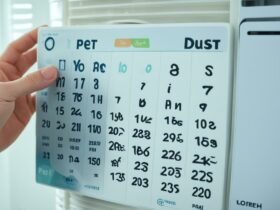Leather sofas exude an air of sophistication and elegance that can transform any room. To ensure your leather sofa retains its beauty and durability over time, it’s essential to establish a comprehensive care routine. In this guide, we’ll cover everything you need to know about maintaining your leather sofa to perfection.
Understanding Different Types of Leather
The first step in caring for your leather sofa is understanding the type of leather it’s made from. There are various leather types, including full-grain, top-grain, and bonded leather. Each type has its unique characteristics, affecting how it responds to cleaning and conditioning.
Preparing for Regular Care
Before diving into the care routine, gather the necessary supplies. Soft cloths, a leather cleaner, conditioner, and a vacuum with a brush attachment are essential tools. Additionally, establish a regular schedule for cleaning and maintenance. Consistency is key to preserving the longevity of your leather sofa.
Daily Maintenance Steps
Start with simple daily tasks to prevent dust and dirt buildup. Use a soft cloth or a microfiber duster to gently wipe down the sofa’s surface. Address spills and stains immediately to prevent them from setting in and causing long-term damage.
Weekly Cleaning Rituals
On a weekly basis, take your maintenance a step further. Use a vacuum with a brush attachment to clean the crevices and gaps where debris can accumulate. After vacuuming, take a damp cloth and wipe down the entire surface of the sofa to remove accumulated grime.
Monthly Conditioning Routine
Leather, like our skin, needs moisture to stay supple and avoid cracking. This is where leather conditioning comes in. A good leather conditioner will replenish the natural oils that leather loses over time. Apply the conditioner following the manufacturer’s guidelines to keep your sofa looking and feeling luxurious.
Dealing with Stains and Spills
Stains and spills are inevitable, but they don’t have to be permanent. Different types of stains require specific treatments. For example, ink stains should be tackled differently from food or liquid spills. It’s crucial to avoid using harsh chemicals that can damage the leather; instead, opt for gentle cleaning solutions.
Sunlight and Leather Furniture
While natural light can enhance your living space, prolonged exposure to direct sunlight can lead to leather fading and drying out. To prevent this, position your leather sofa away from direct sunlight or use window treatments to filter out harmful UV rays.
Scratches and Scuffs
Minor scratches and scuffs are bound to happen, but they can be remedied. Specialized leather-friendly products can help minimize their appearance. For more severe damage, such as deep scratches, it’s best to consult professionals for repair.
Preventative Measures
An ounce of prevention is worth a pound of cure. Use furniture covers or throws to protect your leather sofa from pets, spills, and everyday wear. Be mindful of placing the sofa away from sharp objects or potential hazards to avoid unnecessary damage.
Deep Cleaning and Professional Maintenance
Regular maintenance can only go so far. Periodically, consider a deep cleaning to revitalize your leather sofa’s appearance. Depending on your sofa’s condition, you might opt for a DIY deep cleaning method or seek professional assistance for a thorough clean.
Storage and Care Tips
If you need to store your leather furniture for an extended period, follow these steps to ensure it remains in top condition. Clean and condition the leather before storage, and use breathable covers to prevent moisture buildup, which can lead to mold.
Conclusion
A well-cared-for leather sofa can be the centerpiece of your living space for years to come. By following these steps and being diligent in your maintenance efforts, you’ll be rewarded with a sofa that not only looks inviting but also stands the test of time.
FAQs
Can I use regular household cleaners on my leather sofa?
It’s best to use cleaners specifically designed for leather to avoid damage.
How often should I condition my leather sofa?
Leather should be conditioned every 6-12 months, depending on usage.
What’s the difference between full-grain and bonded leather?
Full-grain is natural and durable, while bonded leather is made from scraps and may not last as long.
Can I place my leather sofa near a heater?
Avoid placing leather furniture near direct heat sources, as it can lead to drying and cracking.
Is professional cleaning necessary, even if I maintain my sofa regularly?
Yes, professional cleaning helps remove deep-seated dirt and extends the sofa’s life.











